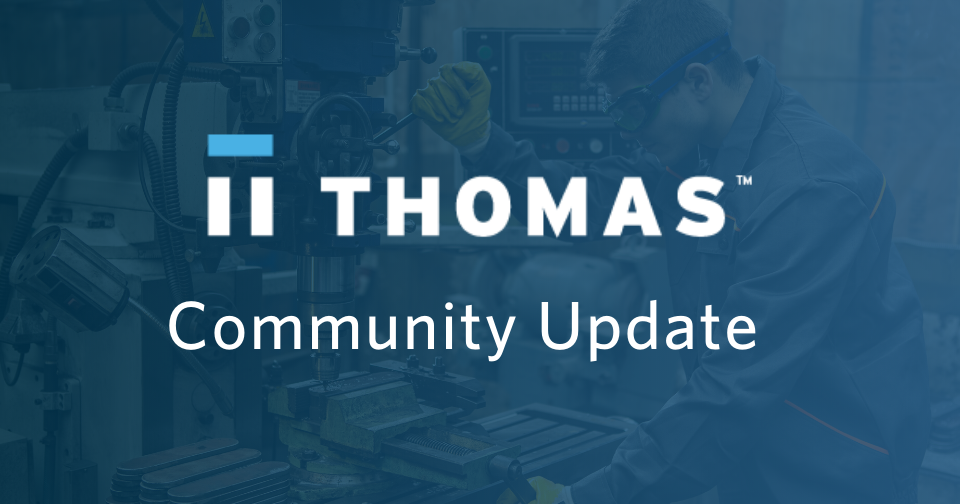ISM2016 Recap: Day Three
Jay Scheer May 17, 2016
From negotiating tactics to supply chain risk mitigation to recognizing underrepresented leaders, there was a lot to learn on day three at ISM2016.
After months of anticipation, ISM2016 — the premier procurement and supply chain event — officially kicked off in Indianapolis. Whether you couldn’t make the trip or just couldn't decide which of the many great sessions to attend, we’re here to fill you in and give you an insider’s perspective with daily recaps straight from the conference.
Read Our Other Recaps
Day 1: Rising Supply Chain Stars
Day 2: Creating a culture of doing, sustainability, CEO tips, and more
Day 4: Overcoming challenges to working with small- and medium-sized businesses
Negotiate Like A Seller In Order To Become A Better Buyer
There was a line out the door for Tuesday’s signature session, Sales Negotiation Tactics Every Buyer Should Know, and the presentation was certainly worth the wait.
Patrick Henry Hansen, Founder and President of Patrick Henry International and sought-after sales coach, weaved lessons from throughout history, as well as lessons learned working with sales teams, together to offer tips that procurement can use to build power and maintain the upper hand when purchasing and negotiating.
The Power Of Power: The craft of negotiation has three fundamental elements – power, tactics and strategy, according to Hansen, and power is the most important of them all.
“When one side recognizes and understands power and the other side doesn’t, It’s not fair,” he said. “It’s like Michael Jordan playing against a second grader.
“The biggest mistake buyers and sellers make is that when they don’t think in terms of power and their counterparts do, they lose, almost 100 percent of the time.”
Power, however, does not exist in a vacuum. Much like the electricity that powers a light, negotiation is powered by sources.
For buyers, power is derived from:
- Time, investment, money and effort (TIME)
- Information
- Options
Sellers, on the other hand, derive power from TIME, information and options, as well as these additional sources:
- Differentiation
- Pains and problems
- Experience and expertise
Winning Tactics: Tactics are the language of negotiation, and you want to make sure it’s not a foreign one. You should be comfortable communicating with the person on the other side of the conversation and understand what they are trying to achieve. In the case of procurement, this means being able to recognize and navigate through selling tactics that may prevent you from negotiating discounts or other changes.
Hansen identified 12 common seller tactics that you should be aware of when entering your next negotiation.
- Surprise: Good sales people will immediately act surprised when presented with a request for a discount or change of terms. That’s because it lowers the buyer’s expectation for negotiation and maintains the value of the product or service.
- Policy and procedure: Sales reps may claim that they are not allowed to deviate from written rules and rate sheets, which allows them to shift the blame
- Limited authority: You’ve likely experienced this while car shopping – your sales person has to check with his or her manager in order to authorize your requests. The same thing happens with your suppliers.
- Third party: Sellers will blame their decisions on someone else, such as HR, legal, engineering or management.
- Question and clarify: Sales representatives will question the demand and seek more information, which is another way of shifting the balance of power in the negotiations.
- Reason and rationale: Buyers are always asking sellers for the rationale behind their pricing, but intelligent sellers will often flip the switch and ask the buyers for the reasoning behind their requests. If you can’t articulate it, the seller is more likely to resist.
- Quid pro quo: Instead of agreeing to a discount or change, the seller will trade for it. For example, the seller may ask for better payment terms or other concessions from you in exchange for lowering their price.
- High demand: Building the power of options, the seller positions their product or service as being in high demand. This is often used to justify the delta in pricing between competitors.
- Differentiation: Similar to the high-demand counter tactic, the more differentiation sellers build, the more they can justify a higher price. As a buyer, you want to convince all sellers that you think the differences are minimal.
- Demands, delays and deadlines: Typically it is the buyer who is operating under a deadline, but some savvy sellers will put demands back on the buyer to create pressure.
- Silence: In a negotiation, silence is deafening. It causes discomfort and may make you move off of your requests.
- Fairness: Fairness is the “alpha” tactic because it is a universally embraced concept. Cultures value fairness, and it appeals to intellectual and emotional reasoning.
Embrace The Introvert In You (Or Your Organization)
Today’s keynote speaker was Susan Cain, author of the best-selling “The Quiet Revolution: Unlocking the Power Of Introverts” and host of one of the most widely-viewed Ted Talks of all time.
Cain explained that, despite the fact that introverts make up 33-50 percent of the population, they are underrepresented in leadership positions. That’s because most managers reward extroverted behavior and don’t recognize the potential of those who are more quiet or reserved.
Yet, recent studies at the Wharton School of Business reveal that introverted leaders often deliver better value than extroverts. In addition, nearly all of the executives profiled in “From Good To Great,” one of the most popular management book of the last two decades, were described as quiet, unassuming, low key, soft spoken and shy – all characteristics of introverts.
Thus, organizations need to rethink leadership and provide opportunities for introverts to shine and contribute. As part of this “rethinking,” you can consider holding fewer group meetings, where Cain said that three people usually do 70% of the talking. That’s not a healthy environment for an introvert, who may have great ideas but have no way of communicating them. Alternatively, you can provide employees with the quiet time they need to think and refresh.
Take the time to groom an “unlikely” leader, someone who is really talented but is being passed over because they don’t “look” like a leader. In addition, you can identify prominent introverts and ask them to share their strengths and start to shift the dynamics in your organization.
And, if you yourself are an introvert, Cain believes you should embrace it.
“It’s a mistake to turn ourselves inside out and be someone that we’re not,” she said.
However, introverts should make an effort to make themselves – and their skills – known. They need to make it a point to speak up early at meetings, which will draw attention and put them at the center of the conversation instead of on the margins.
Are Your Supply Chain Risks About To Turn Into Reality?
Supply chain disruption should be top of mind for all procurement leaders. However, according to new research from Carrie Ericson, Vice President of A.T. Kearney, and Rose Kelly-Falls, Sr. Vice President, Supplier Risk at Rapid Ratings International, that’s not the case in many companies.
According to their research, 89 percent of supply chain risk “leaders” ensure supply continuity and have a plan to combat disruption. Unfortunately, only 52 percent of organizations overall have these same measures in place.
If you are among the 48 percent of companies that do not ensure supply continuity, now is the time to adopt a plan. That’s because the supply chain is being bombarded with disruptive trends, including:
- Geo-political alignment
- U.S. economic resurgence
- Resource slump cycle
- Global violent extremism
- Growth economies
- Global climate change
When a disruptive event does occur, what should you do? Ericson and Kelly-Falls recommend the following:
- Be agile, flexible and armed with the right resources.
- Enlist a rapid response team with cross-functional experts that can be quickly mobilized to the site.
- Organize the team prior to an event so they can practice risk responses and mitigation strategies. Have people ready.
That wraps up our coverage of day three at ISM2016.
Did you find this useful?









